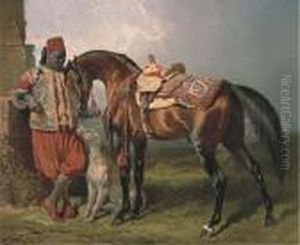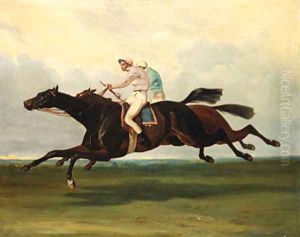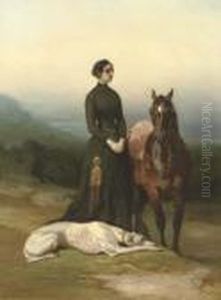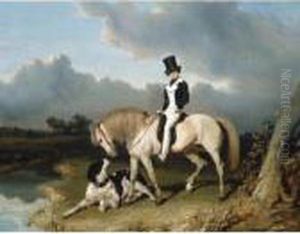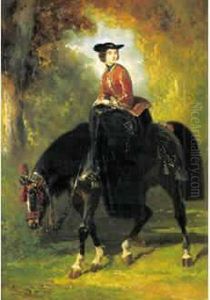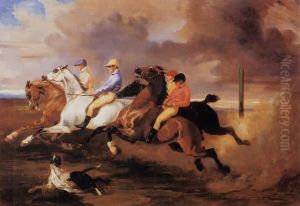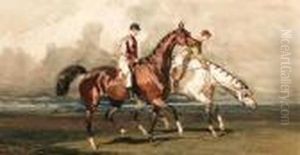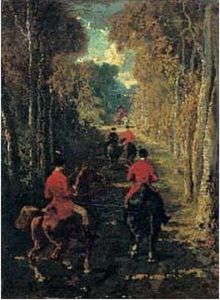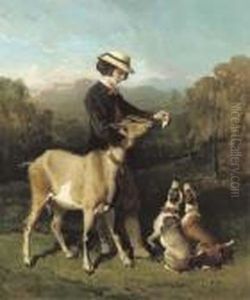Alfred De Dreux Paintings
Alfred De Dreux was a French painter known for his depictions of horses and equestrian subjects. Born on March 23, 1810, in Paris, France, he was initially influenced by the Romantic movement. His uncle, Pierre-Joseph Dedreux-Dorcy, was also a painter and provided early guidance to Alfred. De Dreux's talent was apparent at a young age, and he became a pupil of the famous French painter Théodore Géricault, who was renowned for his work with horses and was a significant influence on De Dreux's style.
De Dreux's works were characterized by their dynamic representation of horses, often capturing them in motion with great detail and vivacity. His paintings were not limited to equestrian subjects, however, as he also painted portraits, dogs, and other animals with the same level of skill and attention to detail.
Throughout his career, De Dreux received numerous commissions from aristocratic clients, including King Louis-Philippe and the Duke of Orléans, which solidified his reputation as a painter of the elite. His work was also appreciated by the public, and he exhibited at the Paris Salon, where he received favorable reviews.
De Dreux's painting style evolved over time, showing influence from the Realism movement, which sought to depict subjects truthfully without artificiality and avoiding artistic conventions, implausible, exotic, and supernatural elements. Despite this evolution, he never lost his distinctive ability to capture the grace and power of horses.
Alfred De Dreux died on March 5, 1860, in Paris. Although not as widely known today as some of his contemporaries, his contributions to equestrian art have been recognized by art historians, and his works are still admired for their beauty and technical skill. De Dreux's paintings can be found in various museums and private collections around the world.









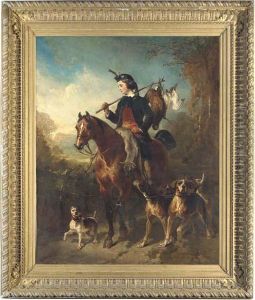






![[treed Cat]](https://www.niceartgallery.com/imgs/2087692/s/alfred-de-dreux-treed-cat-9581f7a2.jpg)






